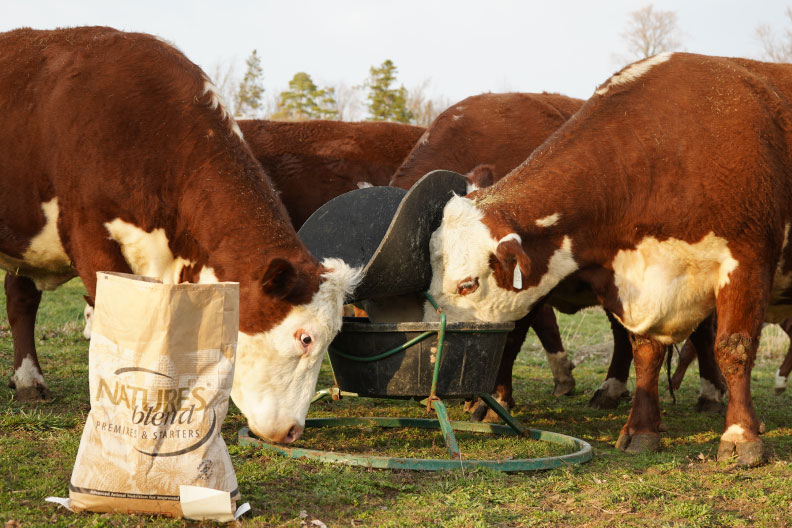By Tom Bowman
Beef Specialist,
Grand Valley Fortifiers
There are many fly species that can affect cattle. However the three most important are Horn Flies, Stable Flies and Face Flies. These can be found on the back, underbelly, legs, around the eyes and nose of cattle or on surfaces throughout barns. These flies lay eggs in manure and other decaying organic matter such as old forages or bedding. Flies generally have a lifecycle of ten to twenty-four days. The way that flies irritate cattle is by congregating around their eyes and nose and biting them for small amounts of blood.
Cattle can be directly impacted by flies as they are a vector for disease transmission. Flies have been known to spread pinkeye, mastitis, and other economically important diseases. While these direct impacts must be dealt with there are many effects which are not directly visible or easy to measure. Since flies add stress to cows they can reduce grazing and water intake and reduce milk production which can result in lower weaning weights in calves.
In feedlot cattle, flies can have many of the same effects. Flies can spread diseases between cattle and increase the need for treatment of pinkeye and some respiratory diseases. Since flies are irritating cattle it may also alter their feeding behaviour and intakes, resulting in a reduction in feed efficiency and average daily gain.
There are several management steps a producer can take to help mitigate the prevalence of flies and reduce the impact they have on cattle. Flies can be controlled through chemicals including pour-on solutions, insecticidal ear tags and cattle oilers placed near water troughs or mineral feeders. Another way to reduce flies is to maintain clean barns and yards by regularly cleaning manure from pens and to clean feed bunks and feed storage areas. Producers can also reduce the impact that flies have by avoiding operations such as castrating and dehorning during hot and dry weather when flies will be the most prevalent.
Nutritionally, producers can mitigate flies by including garlic extract in the mineral mix or supplement. Studies have shown that adding a garlic extract can improve fly counts on cattle and reduce fly avoidance behaviour. Once fed, the garlic scent emanates from the pores of cattle to deter flies. Grand Valley Fortifiers has garlic extract available in several products which could help support your fly control program.
While flies may not seem like a major issue they could be impacting cattle more than producers might realize. Whether its preventing diseases like mastitis and pinkeye, improving gains and weaning weights or just trying to keep cattle as comfortable as possible; it is worthwhile to look at how flies are affecting your herd and what management steps you can take to mitigate the problem. Feel free to contact myself or GVF Nutrition Direct to help you mitigate flies or discuss other production-limiting factors on your operation.
This article was written for the Summer 2021 Beef Grist. To read the whole Beef Grist, click the button below.

